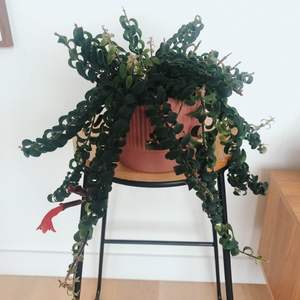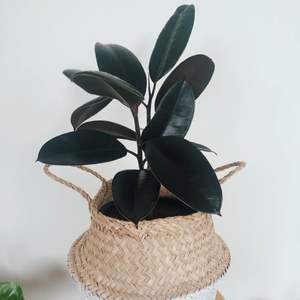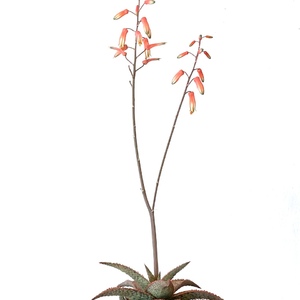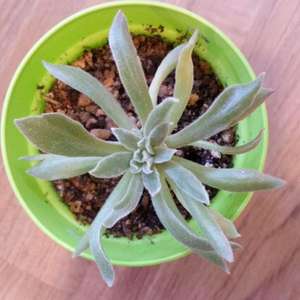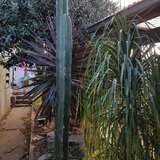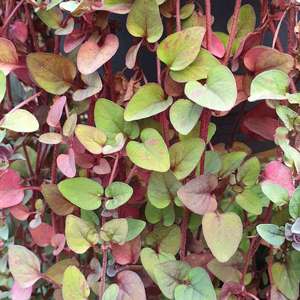文章
ritau
2020年04月19日

Quarantine life, indoor activities are recommemded, today let's plant a ginger at home!
1. Choose your ginger plant.
There are many species of ginger. To grow the most common edible variety, Zingiber officinale, all you need is ginger root from the grocery store. You can find ornamental ginger plants with vibrant flowers at a plant nursery, but these are often inedible.
2.Cut the rhizome into pieces (optional).
If you'd like to grow more than one plant, cut the ginger with a sanitized knife or shears. Any piece at least 1 inch (2.5 cm) wide with one or more eyes can grow into a separate plant. After cutting, leave the pieces in a dry location for a few days to allow them to heal. They will form a protective callus over the cut surface, which reduces the risk of infection.
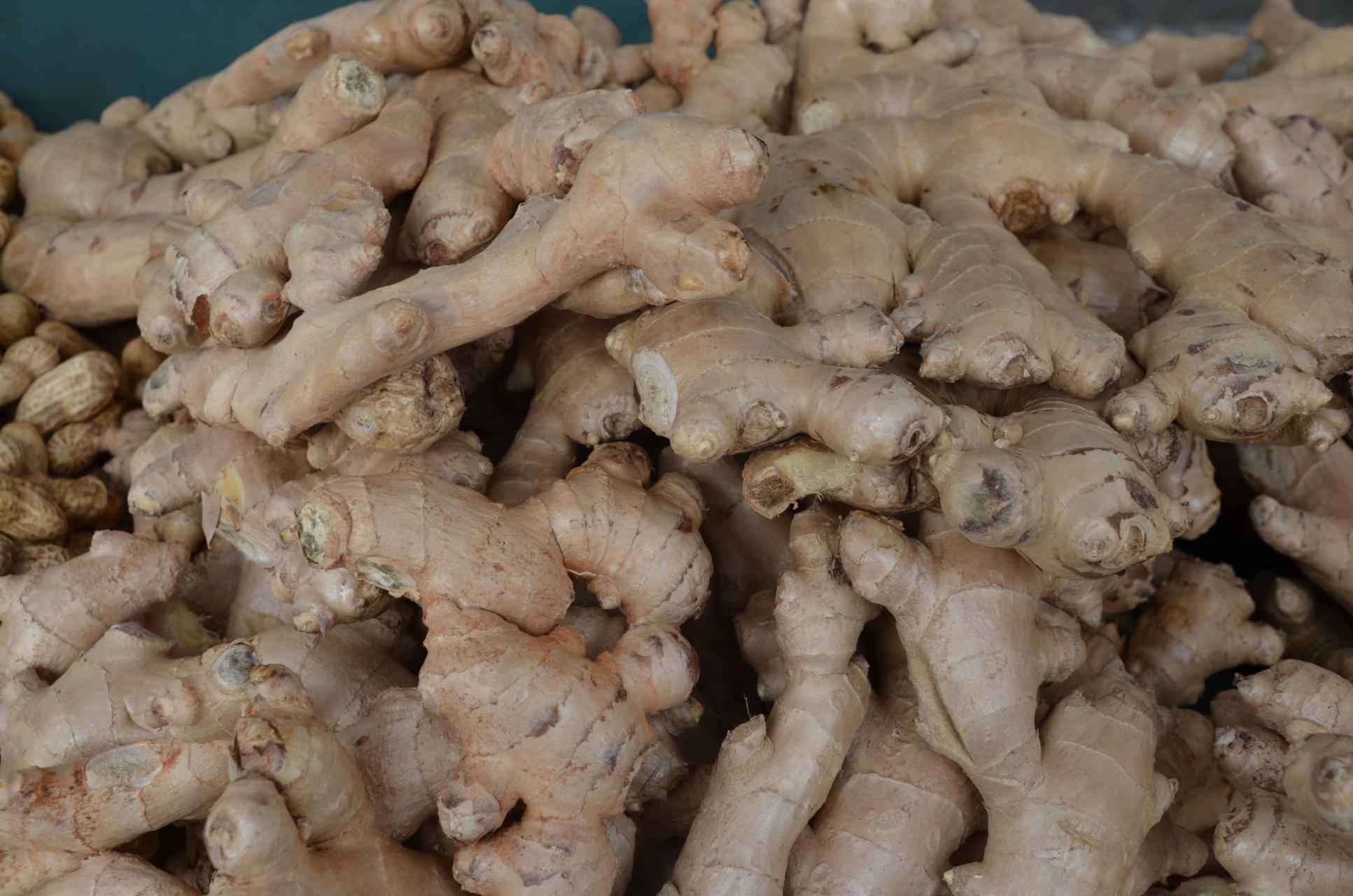
3.Prepare the soil.
Ginger thrives on high-quality, well-draining soil. Mixing garden soil with an equal amount of well-rotted compost should do the trick. If your soil is poor quality or heavy in clay, purchase rich potting soil instead.
4.Choose a location.
Ginger prefers partial shade or areas with morning sun only, away from large roots. The growing location should be sheltered from wind and moist, but not swampy.If the ginger plant has not yet germinated, soil temperatures must be warm — ideally between 71 and 77ºF (22–25ºC).
5.Plant the ginger.
Plant each piece of ginger 2–4 inches (5–10 cm) below loose soil, with the buds pointing upward. If planting in rows, keep each piece 8 inches (20 cm) apart. If planting in pots, plant one piece per large pot (14 in./35 cm diameter).
*Ginger grows slowly, especially outside of the tropics. A sprout might appear within a few days if you're lucky, but continue to water for at least a couple weeks before giving up on the plant.
*Fertilization is not required if the ginger is in rich soil, especially if you've mixed in compost. Have the soil tested first and fertilize accordingly. If soil is poor or you'd like to improve yield, fertilize with a small amount of complete liquid fertilizer each month.
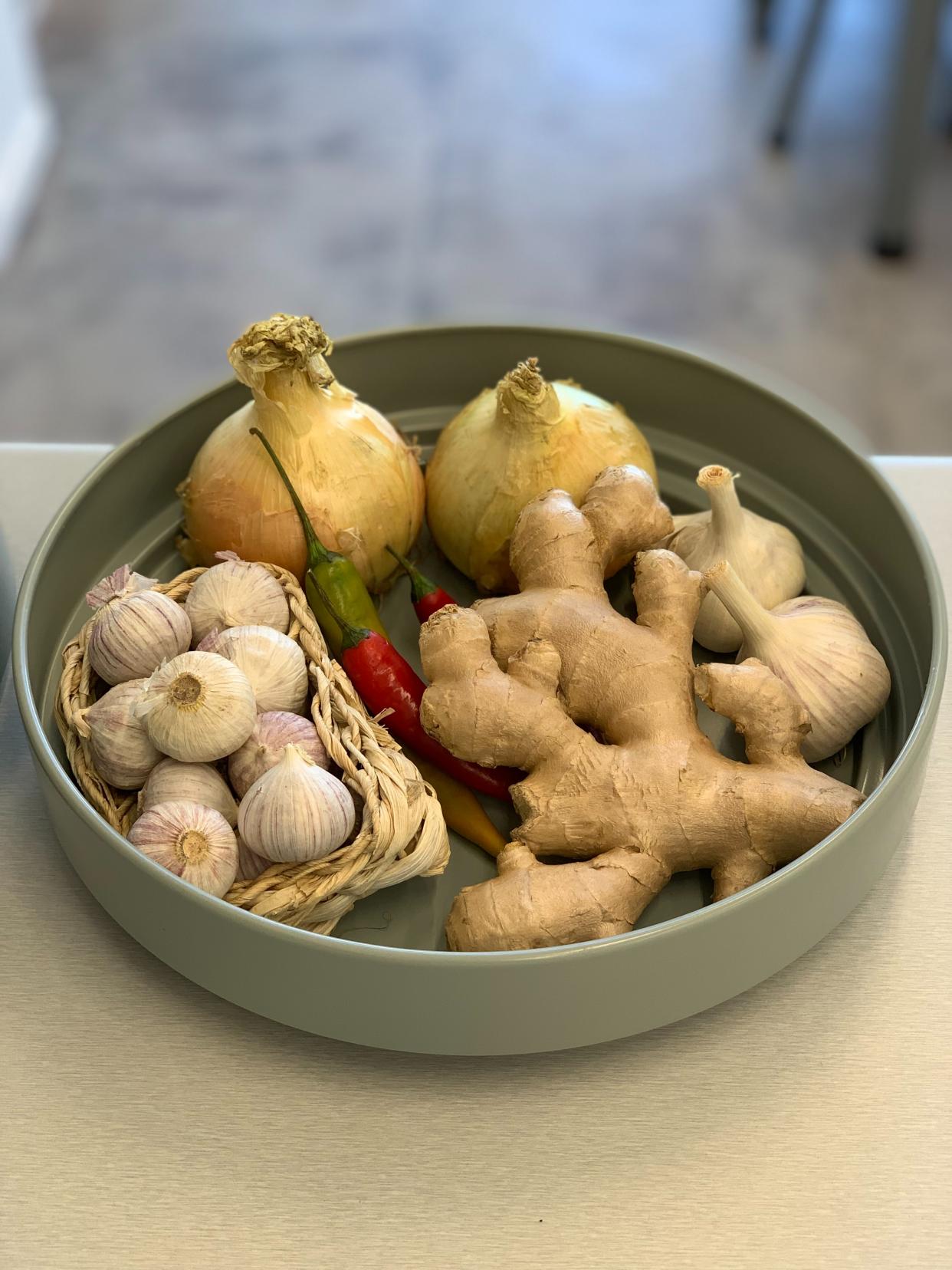
1. Choose your ginger plant.
There are many species of ginger. To grow the most common edible variety, Zingiber officinale, all you need is ginger root from the grocery store. You can find ornamental ginger plants with vibrant flowers at a plant nursery, but these are often inedible.
2.Cut the rhizome into pieces (optional).
If you'd like to grow more than one plant, cut the ginger with a sanitized knife or shears. Any piece at least 1 inch (2.5 cm) wide with one or more eyes can grow into a separate plant. After cutting, leave the pieces in a dry location for a few days to allow them to heal. They will form a protective callus over the cut surface, which reduces the risk of infection.

3.Prepare the soil.
Ginger thrives on high-quality, well-draining soil. Mixing garden soil with an equal amount of well-rotted compost should do the trick. If your soil is poor quality or heavy in clay, purchase rich potting soil instead.
4.Choose a location.
Ginger prefers partial shade or areas with morning sun only, away from large roots. The growing location should be sheltered from wind and moist, but not swampy.If the ginger plant has not yet germinated, soil temperatures must be warm — ideally between 71 and 77ºF (22–25ºC).
5.Plant the ginger.
Plant each piece of ginger 2–4 inches (5–10 cm) below loose soil, with the buds pointing upward. If planting in rows, keep each piece 8 inches (20 cm) apart. If planting in pots, plant one piece per large pot (14 in./35 cm diameter).
*Ginger grows slowly, especially outside of the tropics. A sprout might appear within a few days if you're lucky, but continue to water for at least a couple weeks before giving up on the plant.
*Fertilization is not required if the ginger is in rich soil, especially if you've mixed in compost. Have the soil tested first and fertilize accordingly. If soil is poor or you'd like to improve yield, fertilize with a small amount of complete liquid fertilizer each month.

0
0
文章
ritau
2020年04月05日

The peony or paeony is a flowering plant in the genus Paeonia, the only genus in the family Paeoniaceae. Peonies are native to Asia, Europe and Western North America. Scientists differ on the number of species that can be distinguished, ranging from 25 to 40, although the current consensus is 33 known species. The relationships between the species need to be further clarified.
Peonies are among the most popular garden plants in temperate regions. Herbaceous peonies are also sold as cut flowers on a large scale, although generally only available in late spring and early summer. An emerging source of peonies in mid to late summer is the Alaskan market. Unique growing conditions due to long hours of sunlight create availability from Alaska when other sources have completed harvest.
The peony is among the longest-used flowers in Eastern culture. Along with the plum blossom, it is a traditional floral symbol of China, where the Paeonia suffruticosa is called 牡丹 (mǔdān). It is also known as 富貴花 (fùguìhuā) "flower of riches and honour" or 花王 (huawang) "king of the flowers", and is used symbolically in Chinese art. In 1903, the Qing dynasty declared the peony as the national flower. Currently, the Republic of China government in Taiwan designates the plum blossom as the national flower, while the People's Republic of China government has no legally designated national flower. In 1994, the peony was proposed as the national flower after a nationwide poll, but the National People's Congress failed to ratify the selection. In 2003, another selection process was initiated, but no choice has been made to date.

The ancient Chinese city Luoyang has a reputation as a cultivation centre for the peonies. Throughout Chinese history, peonies in Luoyang have been said to be the finest in the country. Dozens of peony exhibitions and shows are still held there annually.
In the Middle Ages, peonies were often painted with their ripe seed-capsules, since it was the seeds, not the flowers, which were medically significant. Ancient superstition dictated that great care be taken not to be seen by a woodpecker while picking the plant's fruit, or the bird might peck out one's eyes.
In 1957, the Indiana General Assembly passed a law to make the peony the state flower of Indiana, a title which it holds to this day. It replaced the zinnia, which had been the state flower since 1931.
Mischievous nymphs were said to hide in the petals of the Peony, giving it the meaning of Shame or Bashfulness in the Language of Flowers. While the peony takes several years to re-establish itself when moved, it blooms annually for decades once it has done so.
Peonies tend to attract ants to the flower buds. This is due to the nectar that forms on the outside of the flower buds, and is not required for the plants' own pollination or other growth. The presence of ants is thought to provide some deterrence to other harmful insects though, so the production of ant-attracting nectar is plausibly a functional adaptation.Peonies are a common subject in tattoos, often used along with koi-fish. The popular use of peonies in Japanese tattoo was inspired by the ukiyo-e artist Utagawa Kuniyoshi's illustrations of Suikoden, a classical Chinese novel. His paintings of warrior-heroes covered in pictorial tattoos included lions, tigers, dragons, koi fish, and peonies, among other symbols. The peony became a masculine motif, associated with a devil-may-care attitude and disregard for consequence.
Famous painters of peonies have included Conrad Gessner (ca. 1550) and Auguste Renoir in 1879. Paeonia officinalis can be found in the altar picture of Maria im Rosenhag by Schongauer in the former Dominican Church in Colmar.The Italian Jesuit, painter and architect Giuseppe Castiglione (1688-1766), who worked at the court of the Qianlong Emperor in the Qing dynasty, painted peonies.

Peonies are among the most popular garden plants in temperate regions. Herbaceous peonies are also sold as cut flowers on a large scale, although generally only available in late spring and early summer. An emerging source of peonies in mid to late summer is the Alaskan market. Unique growing conditions due to long hours of sunlight create availability from Alaska when other sources have completed harvest.
The peony is among the longest-used flowers in Eastern culture. Along with the plum blossom, it is a traditional floral symbol of China, where the Paeonia suffruticosa is called 牡丹 (mǔdān). It is also known as 富貴花 (fùguìhuā) "flower of riches and honour" or 花王 (huawang) "king of the flowers", and is used symbolically in Chinese art. In 1903, the Qing dynasty declared the peony as the national flower. Currently, the Republic of China government in Taiwan designates the plum blossom as the national flower, while the People's Republic of China government has no legally designated national flower. In 1994, the peony was proposed as the national flower after a nationwide poll, but the National People's Congress failed to ratify the selection. In 2003, another selection process was initiated, but no choice has been made to date.

The ancient Chinese city Luoyang has a reputation as a cultivation centre for the peonies. Throughout Chinese history, peonies in Luoyang have been said to be the finest in the country. Dozens of peony exhibitions and shows are still held there annually.
In the Middle Ages, peonies were often painted with their ripe seed-capsules, since it was the seeds, not the flowers, which were medically significant. Ancient superstition dictated that great care be taken not to be seen by a woodpecker while picking the plant's fruit, or the bird might peck out one's eyes.
In 1957, the Indiana General Assembly passed a law to make the peony the state flower of Indiana, a title which it holds to this day. It replaced the zinnia, which had been the state flower since 1931.
Mischievous nymphs were said to hide in the petals of the Peony, giving it the meaning of Shame or Bashfulness in the Language of Flowers. While the peony takes several years to re-establish itself when moved, it blooms annually for decades once it has done so.
Peonies tend to attract ants to the flower buds. This is due to the nectar that forms on the outside of the flower buds, and is not required for the plants' own pollination or other growth. The presence of ants is thought to provide some deterrence to other harmful insects though, so the production of ant-attracting nectar is plausibly a functional adaptation.Peonies are a common subject in tattoos, often used along with koi-fish. The popular use of peonies in Japanese tattoo was inspired by the ukiyo-e artist Utagawa Kuniyoshi's illustrations of Suikoden, a classical Chinese novel. His paintings of warrior-heroes covered in pictorial tattoos included lions, tigers, dragons, koi fish, and peonies, among other symbols. The peony became a masculine motif, associated with a devil-may-care attitude and disregard for consequence.
Famous painters of peonies have included Conrad Gessner (ca. 1550) and Auguste Renoir in 1879. Paeonia officinalis can be found in the altar picture of Maria im Rosenhag by Schongauer in the former Dominican Church in Colmar.The Italian Jesuit, painter and architect Giuseppe Castiglione (1688-1766), who worked at the court of the Qianlong Emperor in the Qing dynasty, painted peonies.

0
0
文章
ritau
2020年03月30日

The carrot (Daucus carota subsp. sativus) is a root vegetable, usually orange in colour, though purple, black, red, white, and yellow cultivars exist.The carrot is a biennial plant in the umbellifer family Apiaceae. At first, it grows a rosette of leaves while building up the enlarged taproot. Fast-growing cultivars mature within three months (90 days) of sowing the seed, while slower-maturing cultivars need a month longer (120 days). The roots contain high quantities of alpha- and beta-carotene, and are a good source of vitamin K and vitamin B6, but the belief that eating carrots improves night vision is a myth put forward by the British in World War II to mislead the enemy about their military capabilities.

*Nutrition
Raw carrots are 88% water, 9% carbohydrates, 0.9% protein, 2.8% dietary fiber, 1% ash and 0.2% fat. Carrot dietary fiber comprises mostly cellulose, with smaller proportions of hemicellulose, lignin and starch. Free sugars in carrot include sucrose, glucose, and fructose.
The carrot gets its characteristic, bright orange colour from β-carotene, and lesser amounts of α-carotene, γ-carotene, lutein, and zeaxanthin.α- and β-carotenes are partly metabolized into vitamin A, providing more than 100% of the Daily Value (DV) per 100 g serving of carrots (right table). Carrots are also a good source of vitamin K (13% DV) and vitamin B6 (11% DV), but otherwise have modest content of other essential nutrients (table).
The provitamin A beta-carotene from carrots does not actually help people to see in the dark unless they suffer from vitamin A deficiency. This myth was propaganda used by the Royal Air Force during the Second World War to explain why their pilots had improved success during night air battles, but was actually used to disguise advances in radar technology and the use of red lights on instrument panels. Nevertheless, the consumption of carrots was advocated in Britain at the time as part of a Dig for Victory campaign. A radio programme called The Kitchen Front encouraged people to grow, store and use carrots in various novel ways, including making carrot jam and Woolton pie, named after the Lord Woolton, the Minister for Food. The British public during WWII generally believed that eating carrots would help them see better at night and in 1942 there was a 100,000-ton surplus of carrots from the extra production.

*How to grow/Tips*
Carrots are direct seeded in the garden rather than being transplanted and disturbing the roots. Carrot seeds can take up to 15 days to germinate. Keep the soil moist until seedlings appear.
*Soil
Choose fertile, loose, neutral or slightly acidic soil, preferably sandy loam, which is good for irrigating and draining.
*Temperature
he temperature of germination: 20℃-25℃
the growth temperature: 17℃-23℃
*Humidity
70-80%
*Sun Exposure
Full sun to light shade
*Fertilization
Potassium sulphate compound fertilizer
When to harvest your carrots will depend on the variety you are growing, but the average is about 50 to 75 days from seed.

Hope you will have a good harvest!

*Nutrition
Raw carrots are 88% water, 9% carbohydrates, 0.9% protein, 2.8% dietary fiber, 1% ash and 0.2% fat. Carrot dietary fiber comprises mostly cellulose, with smaller proportions of hemicellulose, lignin and starch. Free sugars in carrot include sucrose, glucose, and fructose.
The carrot gets its characteristic, bright orange colour from β-carotene, and lesser amounts of α-carotene, γ-carotene, lutein, and zeaxanthin.α- and β-carotenes are partly metabolized into vitamin A, providing more than 100% of the Daily Value (DV) per 100 g serving of carrots (right table). Carrots are also a good source of vitamin K (13% DV) and vitamin B6 (11% DV), but otherwise have modest content of other essential nutrients (table).
The provitamin A beta-carotene from carrots does not actually help people to see in the dark unless they suffer from vitamin A deficiency. This myth was propaganda used by the Royal Air Force during the Second World War to explain why their pilots had improved success during night air battles, but was actually used to disguise advances in radar technology and the use of red lights on instrument panels. Nevertheless, the consumption of carrots was advocated in Britain at the time as part of a Dig for Victory campaign. A radio programme called The Kitchen Front encouraged people to grow, store and use carrots in various novel ways, including making carrot jam and Woolton pie, named after the Lord Woolton, the Minister for Food. The British public during WWII generally believed that eating carrots would help them see better at night and in 1942 there was a 100,000-ton surplus of carrots from the extra production.

*How to grow/Tips*
Carrots are direct seeded in the garden rather than being transplanted and disturbing the roots. Carrot seeds can take up to 15 days to germinate. Keep the soil moist until seedlings appear.
*Soil
Choose fertile, loose, neutral or slightly acidic soil, preferably sandy loam, which is good for irrigating and draining.
*Temperature
he temperature of germination: 20℃-25℃
the growth temperature: 17℃-23℃
*Humidity
70-80%
*Sun Exposure
Full sun to light shade
*Fertilization
Potassium sulphate compound fertilizer
When to harvest your carrots will depend on the variety you are growing, but the average is about 50 to 75 days from seed.

Hope you will have a good harvest!
0
0
文章
ritau
2020年03月11日

Arbor Day (or Arbour in some countries) is a holiday in which individuals and groups are encouraged to plant trees. Today, many countries observe such a holiday. Though usually observed in the spring, the date varies, depending on climate and suitable planting season.

*First Arbor Day in the world
The Spanish village of Mondoñedo held the first documented arbor plantation festival in the world organized by its mayor in 1594. The place remains as Alameda de los Remedios and it is still planted with lime and horse-chestnut trees. A humble granite marker and a bronze plate recall the event. Additionally, the small Spanish village of Villanueva de la Sierra held the first modern Arbor Day, an initiative launched in 1805 by the local priest with the enthusiastic support of the entire population.
*First American Arbor Day
The first American Arbor Day was originated in Nebraska City, Nebraska by J. Sterling Morton. On April 10, 1872, an estimated one million trees were planted in Nebraska.
Birdsey Northrop of Connecticut was responsible for globalizing the idea when he visited Japan in 1883 and delivered his Arbor Day and Village Improvement message. In that same year, the American Forestry Association made Northrop the Chairman of the committee to campaign for Arbor Day nationwide. He also brought his enthusiasm for Arbor Day to Australia, Canada, and Europe.

*McCreight and Theodore Roosevelt
Beginning in 1906, Pennsylvania conservationist Major Israel McCreight of DuBois, Pennsylvania, argued that President Theodore Roosevelt’s conservation speeches were limited to businessmen in the lumber industry and recommended a campaign of youth education and a national policy on conservation education. McCreight urged Roosevelt to make a public statement to school children about trees and the destruction of American forests. Conservationist Gifford Pinchot, Chief of the United States Forest Service, embraced McCreight’s recommendations and asked the President to speak to the public school children of the United States about conservation. On April 15, 1907, Roosevelt issued an "Arbor Day Proclamation to the School Children of the United States" about the importance of trees and that forestry deserves to be taught in U.S. schools. Pinchot wrote McCreight, "we shall all be indebted to you for having made the suggestion."
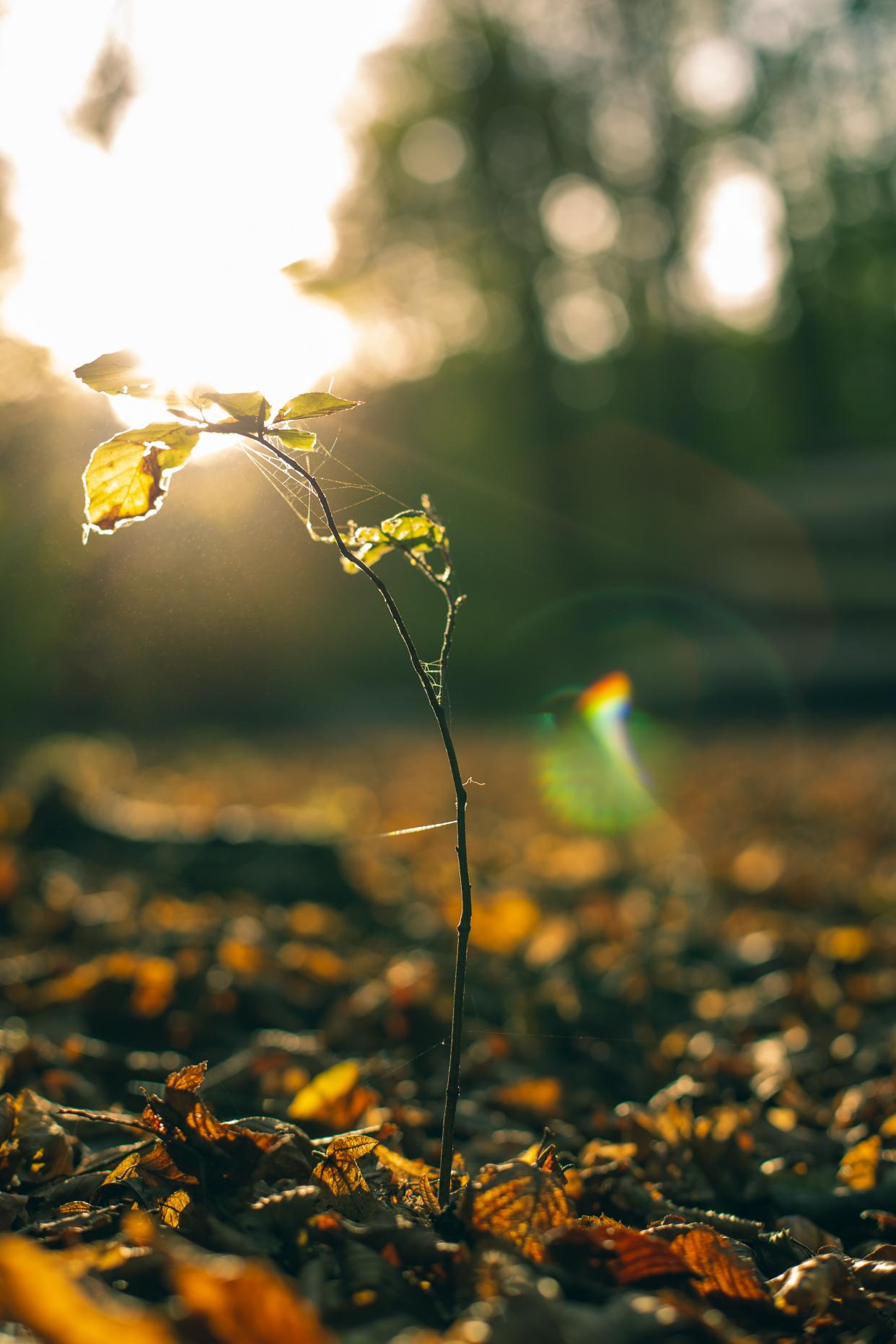

*First Arbor Day in the world
The Spanish village of Mondoñedo held the first documented arbor plantation festival in the world organized by its mayor in 1594. The place remains as Alameda de los Remedios and it is still planted with lime and horse-chestnut trees. A humble granite marker and a bronze plate recall the event. Additionally, the small Spanish village of Villanueva de la Sierra held the first modern Arbor Day, an initiative launched in 1805 by the local priest with the enthusiastic support of the entire population.
*First American Arbor Day
The first American Arbor Day was originated in Nebraska City, Nebraska by J. Sterling Morton. On April 10, 1872, an estimated one million trees were planted in Nebraska.
Birdsey Northrop of Connecticut was responsible for globalizing the idea when he visited Japan in 1883 and delivered his Arbor Day and Village Improvement message. In that same year, the American Forestry Association made Northrop the Chairman of the committee to campaign for Arbor Day nationwide. He also brought his enthusiasm for Arbor Day to Australia, Canada, and Europe.

*McCreight and Theodore Roosevelt
Beginning in 1906, Pennsylvania conservationist Major Israel McCreight of DuBois, Pennsylvania, argued that President Theodore Roosevelt’s conservation speeches were limited to businessmen in the lumber industry and recommended a campaign of youth education and a national policy on conservation education. McCreight urged Roosevelt to make a public statement to school children about trees and the destruction of American forests. Conservationist Gifford Pinchot, Chief of the United States Forest Service, embraced McCreight’s recommendations and asked the President to speak to the public school children of the United States about conservation. On April 15, 1907, Roosevelt issued an "Arbor Day Proclamation to the School Children of the United States" about the importance of trees and that forestry deserves to be taught in U.S. schools. Pinchot wrote McCreight, "we shall all be indebted to you for having made the suggestion."

0
0
文章
ritau
2020年03月09日

Calendula officinalis, the pot marigold, ruddles, common marigold or Scotch marigold, is a plant in the genus Calendula of the family Asteraceae. It is probably native to southern Europe, though its long history of cultivation makes its precise origin unknown, and it may possibly be of garden origin. It is also widely naturalised farther north in Europe (as far as southern England) and elsewhere in warm temperate regions of the world.
The Latin specific epithet officinalis refers to the plant's medical and herbal uses.

*Cultivation
Calendula officinalis is widely cultivated and can be grown easily in sunny locations in most kinds of soils. Although perennial, it is commonly treated as an annual, particularly in colder regions where its winter survival is poor, and in hot summer locations where it also does not survive.
Calendulas are considered by many gardening experts as among the easiest and most versatile flowers to grow in a garden, especially because they tolerate most soils. In temperate climates, seeds are sown in spring for blooms that last throughout the summer and well into the fall. In areas of limited winter freezing, seeds are sown in autumn for winter color. Plants will wither in subtropical summer. Seeds will germinate freely in sunny or half-sunny locations, but plants do best if planted in sunny locations with rich, well-drained soil. Pot marigolds typically bloom quickly from seed (in under two months) in bright yellows, golds, and oranges.
Leaves are spirally arranged, 5–18 cm long, simple, and slightly hairy. The flower heads range from pastel yellow to deep orange, and are 3–7 cm across, with both ray florets and disc florets. Most cultivars have a spicy aroma. It is recommended to deadhead (remove dying flower heads) the plants regularly to maintain even blossom production.
*Uses
Pot marigold florets are edible. They are often used to add color to salads or added to dishes as a garnish and in lieu of saffron. The leaves are edible but are often not palatable. They have a history of use as a potherb and in salads.

Flowers were used in ancient Greek, Roman, Middle Eastern, and Indian cultures as a medicinal herb, as well as a dye for fabrics, foods, and cosmetics.Many of these uses persist today. They are also used to make oil that protects the skin.
Marigold leaves can also be made into a poultice that helps scratches and shallow cuts to heal faster, and can help prevent infection.
The Latin specific epithet officinalis refers to the plant's medical and herbal uses.

*Cultivation
Calendula officinalis is widely cultivated and can be grown easily in sunny locations in most kinds of soils. Although perennial, it is commonly treated as an annual, particularly in colder regions where its winter survival is poor, and in hot summer locations where it also does not survive.
Calendulas are considered by many gardening experts as among the easiest and most versatile flowers to grow in a garden, especially because they tolerate most soils. In temperate climates, seeds are sown in spring for blooms that last throughout the summer and well into the fall. In areas of limited winter freezing, seeds are sown in autumn for winter color. Plants will wither in subtropical summer. Seeds will germinate freely in sunny or half-sunny locations, but plants do best if planted in sunny locations with rich, well-drained soil. Pot marigolds typically bloom quickly from seed (in under two months) in bright yellows, golds, and oranges.
Leaves are spirally arranged, 5–18 cm long, simple, and slightly hairy. The flower heads range from pastel yellow to deep orange, and are 3–7 cm across, with both ray florets and disc florets. Most cultivars have a spicy aroma. It is recommended to deadhead (remove dying flower heads) the plants regularly to maintain even blossom production.
*Uses
Pot marigold florets are edible. They are often used to add color to salads or added to dishes as a garnish and in lieu of saffron. The leaves are edible but are often not palatable. They have a history of use as a potherb and in salads.

Flowers were used in ancient Greek, Roman, Middle Eastern, and Indian cultures as a medicinal herb, as well as a dye for fabrics, foods, and cosmetics.Many of these uses persist today. They are also used to make oil that protects the skin.
Marigold leaves can also be made into a poultice that helps scratches and shallow cuts to heal faster, and can help prevent infection.
0
0
文章
ritau
2020年02月23日

In botany, chlorosis is a condition in which leaves produce insufficient chlorophyll. As chlorophyll is responsible for the green color of leaves, chlorotic leaves are pale, yellow, or yellow-white. The affected plant has little or no ability to manufacture carbohydrates through photosynthesis and may die unless the cause of its chlorophyll insufficiency is treated and this may lead to a plant diseases called rusts, although some chlorotic plants, such as the albino Arabidopsis thaliana mutant ppi2, are viable if supplied with exogenous sucrose.

Chlorosis is derived from the Greek khloros meaning 'greenish-yellow', 'pale green', 'pale', 'pallid', or 'fresh'.
In viticulture, the most common symptom of poor nutrition in grapevines is the yellowing of grape leaves caused by chlorosis and the subsequent loss of chlorophyll. This is often seen in vineyard soils that are high in limestone such as the Italian wine region of Barolo in the Piedmont, the Spanish wine region of Rioja and the French wine regions of Champagne and Burgundy. In these soils the grapevine often struggles to pull sufficient levels of iron which is a needed component in the production of chlorophyll.
Chlorosis is typically caused when leaves do not have enough nutrients to synthesise all the chlorophyll they need. It can be brought about by a combination of factors including:

* a specific mineral deficiency in the soil, such as iron,magnesium or zinc
* deficient nitrogen and/or proteins
* a soil pH at which minerals become unavailable for absorption by the roots
* poor drainage (waterlogged roots)
* damaged and/or compacted roots
* pesticides and particularly herbicides may cause chlorosis, both to target weeds and occasionally to the crop being treated.
* exposure to sulphur dioxide
* ozone injury to sensitive plants
* presence of any number of bacterial pathogens, for instance Pseudomonas syringae pv. tagetis that causes complete chlorosis on Asteraceae
* fungal infection, e.g. Bakanae.
* However, the exact conditions vary from plant type to plant type. For example, Azaleas grow best in acidic soil and rice is unharmed by waterlogged soil.

Specific nutrient deficiencies (often aggravated by high soil pH) may be corrected by supplemental feedings of iron, in the form of a chelate or sulphate, magnesium or nitrogen compounds in various combinations.

Chlorosis is derived from the Greek khloros meaning 'greenish-yellow', 'pale green', 'pale', 'pallid', or 'fresh'.
In viticulture, the most common symptom of poor nutrition in grapevines is the yellowing of grape leaves caused by chlorosis and the subsequent loss of chlorophyll. This is often seen in vineyard soils that are high in limestone such as the Italian wine region of Barolo in the Piedmont, the Spanish wine region of Rioja and the French wine regions of Champagne and Burgundy. In these soils the grapevine often struggles to pull sufficient levels of iron which is a needed component in the production of chlorophyll.
Chlorosis is typically caused when leaves do not have enough nutrients to synthesise all the chlorophyll they need. It can be brought about by a combination of factors including:

* a specific mineral deficiency in the soil, such as iron,magnesium or zinc
* deficient nitrogen and/or proteins
* a soil pH at which minerals become unavailable for absorption by the roots
* poor drainage (waterlogged roots)
* damaged and/or compacted roots
* pesticides and particularly herbicides may cause chlorosis, both to target weeds and occasionally to the crop being treated.
* exposure to sulphur dioxide
* ozone injury to sensitive plants
* presence of any number of bacterial pathogens, for instance Pseudomonas syringae pv. tagetis that causes complete chlorosis on Asteraceae
* fungal infection, e.g. Bakanae.
* However, the exact conditions vary from plant type to plant type. For example, Azaleas grow best in acidic soil and rice is unharmed by waterlogged soil.

Specific nutrient deficiencies (often aggravated by high soil pH) may be corrected by supplemental feedings of iron, in the form of a chelate or sulphate, magnesium or nitrogen compounds in various combinations.
0
0
文章
ritau
2020年01月30日

Hello everybody, welcome back to our channel! Today we are going to teach you how to grow delicious grapes at home. Here are 7 steps to go:
1. Plant your grapevines.
Depending on the species of grapes you are planting, spacing will be different for each plant. For American and European grapes, plant each vine 6–10 feet (1.8–3.0 m) apart. Muscadines require much more space, and should be planted approximately 16 feet (4.9 m) apart. Plant the cuttings in a trench with the basal and center bud covered. The top bud should be just above the soil surface. Press the soil firmly around the newly planted grapevine cuttings.
2. Give your plants a good watering.
Grapevines don’t prefer heavy water or rain, so after the first watering keep the amount of water you give them to a minimum. Keep water near the roots so that the majority of it gets absorbed rather than evaporated by the sun. If your area doesn’t get much rain, set up a drip system directly at the roots so that the grapevines get small amounts of water on a regular basis.

3. Prune your grapevines.
The first year, the grapevine should not be allowed to produce any fully matured fruits as these can damage the young vine with their weight. Cut back all the fruit, as well as all the vines except for the strongest that branch off the cane. In later years prune as needed following established local practices, and prune back 90% of the new growth on older vines each year.
4. Prune vines when dormant.
Always always prune grapevines when they are dormant. They will otherwise bleed their sap - losing vigour. This is typically in late winter when it is no longer cold enough to frost outside.

5. Mulch around the vines.
A layer of mulch around your plants will regulate soil temperature, retain water, and reduce weeds.
6. Apply pest control as needed.
Little pest control is needed as grapevines are naturally hardy. Keep weeds at bay by hand-weeding on a regular basis, and cover you grapevines in bird net to keep birds away if necessary. Seek guidance from your local gardening club or agricultural extension on how to combat the Vine Moth. It is one of the few pests that can decimate grapevines.
7. Harvest your grapes when appropriate. Strong, edible fruit likely won’t appear for anywhere from 1-3 years. When it appears, test its ripeness by picking a few grapes from different areas and tasting them. If the grapes are sweet, start picking as they ready for harvesting and eating.
source:wikihow

Hope you can enjoy a fine harvest!
1. Plant your grapevines.
Depending on the species of grapes you are planting, spacing will be different for each plant. For American and European grapes, plant each vine 6–10 feet (1.8–3.0 m) apart. Muscadines require much more space, and should be planted approximately 16 feet (4.9 m) apart. Plant the cuttings in a trench with the basal and center bud covered. The top bud should be just above the soil surface. Press the soil firmly around the newly planted grapevine cuttings.
2. Give your plants a good watering.
Grapevines don’t prefer heavy water or rain, so after the first watering keep the amount of water you give them to a minimum. Keep water near the roots so that the majority of it gets absorbed rather than evaporated by the sun. If your area doesn’t get much rain, set up a drip system directly at the roots so that the grapevines get small amounts of water on a regular basis.

3. Prune your grapevines.
The first year, the grapevine should not be allowed to produce any fully matured fruits as these can damage the young vine with their weight. Cut back all the fruit, as well as all the vines except for the strongest that branch off the cane. In later years prune as needed following established local practices, and prune back 90% of the new growth on older vines each year.
4. Prune vines when dormant.
Always always prune grapevines when they are dormant. They will otherwise bleed their sap - losing vigour. This is typically in late winter when it is no longer cold enough to frost outside.

5. Mulch around the vines.
A layer of mulch around your plants will regulate soil temperature, retain water, and reduce weeds.
6. Apply pest control as needed.
Little pest control is needed as grapevines are naturally hardy. Keep weeds at bay by hand-weeding on a regular basis, and cover you grapevines in bird net to keep birds away if necessary. Seek guidance from your local gardening club or agricultural extension on how to combat the Vine Moth. It is one of the few pests that can decimate grapevines.
7. Harvest your grapes when appropriate. Strong, edible fruit likely won’t appear for anywhere from 1-3 years. When it appears, test its ripeness by picking a few grapes from different areas and tasting them. If the grapes are sweet, start picking as they ready for harvesting and eating.
source:wikihow

Hope you can enjoy a fine harvest!
0
0
文章
ritau
2020年01月09日

"In case I don't see ya', good afternoon, good evening and goodnight."
Hi, everybody, today we are going to introduce a common plant---Mint, about how to grow it at home and how to drink it!

Growing Mint
*plant
a. white thick rhizome should be chosen
b. trim it to about 8cm long and bury it
*Soil
loose & sand soil
well drained
fertile
*Temperature
20-30C°
Proper light
tends to be wetter
When it's time to harvest, let's pick up a couple of leaves and make a Mojito!

Recipe:
*Material
a. white rum-45ml
b. lemon-quarter
c. sugar-2 spoons
d. soda water-150ml
e. crushed ice-a few
*Steps:
a. clean the mint leaves, mash the leaves with sugar and put them all into a glass
b. squeeze the lemon juice into the glass, and also put lemon into it
c. put ice into the class
d. pour the rum and soda water into the glass
Hi, everybody, today we are going to introduce a common plant---Mint, about how to grow it at home and how to drink it!

Growing Mint
*plant
a. white thick rhizome should be chosen
b. trim it to about 8cm long and bury it
*Soil
loose & sand soil
well drained
fertile
*Temperature
20-30C°
Proper light
tends to be wetter
When it's time to harvest, let's pick up a couple of leaves and make a Mojito!

Recipe:
*Material
a. white rum-45ml
b. lemon-quarter
c. sugar-2 spoons
d. soda water-150ml
e. crushed ice-a few
*Steps:
a. clean the mint leaves, mash the leaves with sugar and put them all into a glass
b. squeeze the lemon juice into the glass, and also put lemon into it
c. put ice into the class
d. pour the rum and soda water into the glass
0
0






